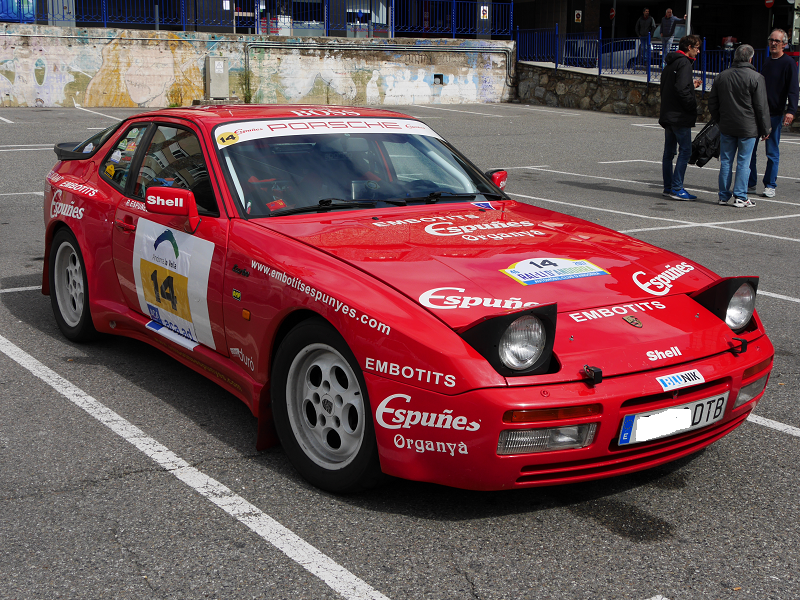Porsche 944. Classic rally edition
The Porsche 944 is a sports car manufactured by German automobile manufacturer Porsche from 1982 until 1991. A front-engine, rear-wheel drive mid-level model based on the 924 platform, the 944 was available in coupé or cabriolet body styles, with either naturally aspirated or turbocharged engines. With over 163,000 cars produced, the 944 was the most successful sports car in Porsche’s history until the introductions of the Boxster and 997 Carrera.
Extensive design revisions for the 1992 model year prompted Porsche to drop the 944 nameplate and rebrand the vehicle as the 968.
Porsche introduced the 944 for the 1982 model year. It was slightly faster (despite having a poorer drag coefficient), was better equipped and more refined than the 924; it had better handling and stopping power, and was more comfortable to drive.
The factory-claimed a 0–97 km/h (60 mph) acceleration time of less than 9 seconds (8.3 seconds according to “Porsche the Ultimate Guide” By Scott Faragher).
The car had a nearly even front to rear weight distribution (50.7% front/49.3% rear) courtesy of the rear transaxle balancing out the engine in the front.
North American-market cars had bigger bumpers and the front bumper had a larger rubber portion, replacing the auxiliary lights as required by the North American laws.
In mid-1985, the 944 underwent its first significant changes, these included: new dashboard and door panels, embedded radio antenna, upgraded alternator (from 90 amp to 115 amp), increased oil sump capacity, new front and rear cast alloy control arms and semi-trailing arms, larger fuel tank, optional heated and powered seats, Porsche HiFi sound system, and revisions in the mounting of the transaxle to reduce noise and vibration. The front windshield was now a flush-mounted unit. The “cookie cutter” style wheels used in the early 944s were upgraded to new “phone dial” style wheels (Fuchs wheels remained an option).
For the 1987 model year, the 944 Motronic DME was updated, and an anti-lock braking system (ABS) and driver and front passenger airbags were introduced. The 944 Turbo was the first car to offer airbags as standard equipment; they were optional on other 944 models. Because of the ABS, the wheel offset was changed to 52 mm (2.05 in), and Fuchs wheels were no longer available as an option.
In early 1989 before the release of the 944S2, Porsche upgraded the 944’s engine from the 2.5 L four cylinder engine to a 2.7 L engine having a bore of 104 mm (4.1 in) and stroke of 78.9 mm (3.1 in), with a rated power output of 164 PS (121 kW) (versus 160 PS (118 kW) for the 1988 2.5 L version) and a significant increase in torque. In addition to the increase in displacement, the new engine featured a siamesed-cylinder block design and a different cylinder head which incorporated larger valves.












